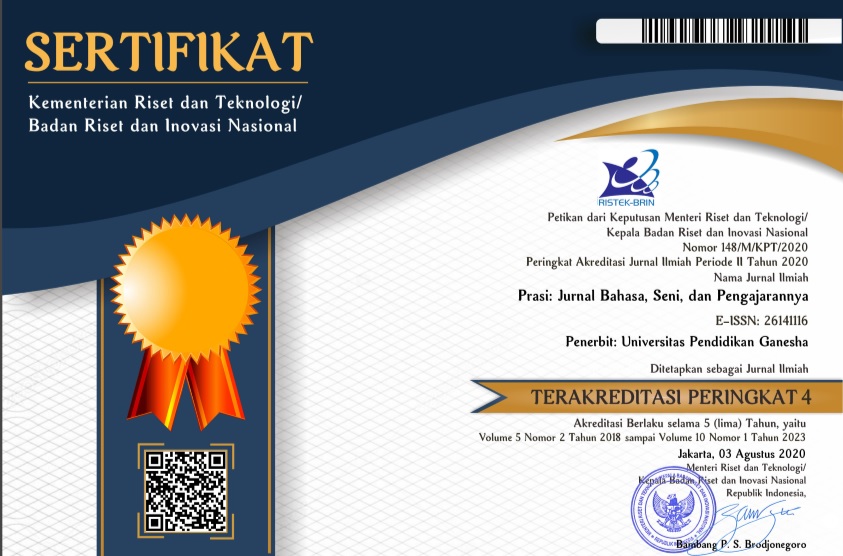ANALISIS VISUAL BALIHO PEMILU CALON LEGISLATIF 2014 DAERAH PEMILIHAN DENPASAR SELATAN
DOI:
https://doi.org/10.23887/prasi.v10i19.8857Abstract
The aim of this studyis to identify the billboard of legislative candidates 2014 in the elections area the south Denpasar. Especially, it aims to know the weakness of the billboard design. To identify its weakness, selected nine pieces of billboard taken from nine different villages where the billboard have a problem in the design. Then, those four billboards that have the greatest problem in design are taken to be identified.
Data were collected through the observation by taking the picture of the billboard of legislative candidates. Then, the data is analyzed descriptively and qualitatively. The results showed that the weakness of the billboard candidates in general is on the designs. It shows that the designed does not follow the rules of the science of Visual Communication Design. Because of that, it is necessary to give the examples of better designs. So whatever the purpose of making the billboards can be in accordance whit what is expected.
Keywords: Election Billboard,Visual Analysis, South Denpasar.
Downloads
Published
Issue
Section
License
Authors who publish with Prasi agree to the following terms:- Authors retain copyright and grant the journal the right of first publication with the work simultaneously licensed under a Creative Commons Attribution License (CC BY-SA 4.0) that allows others to share the work with an acknowledgment of the work's authorship and initial publication in this journal
- Authors are able to enter into separate, additional contractual arrangements for the non-exclusive distribution of the journal's published version of the work (e.g., post it to an institutional repository or publish it in a book), with an acknowledgment of its initial publication in this journal.
- Authors are permitted and encouraged to post their work online (e.g., in institutional repositories or on their website) prior to and during the submission process, as it can lead to productive exchanges, as well as earlier and greater citation of published work. (See The Effect of Open Access)


.png)
.png)









